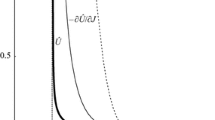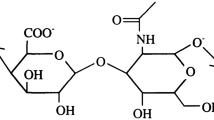Abstract
This paper describes the flow patterns and related viscoelastic behaviors of articular cartilage under four different loading configurations: 1) confined compression, 2) unconfined compression, 3) translating parabolic surface traction of constant loading span over a cartilage layer, and 4) spreading parabolic surface traction of periodically varying span on a cartilage layer. Brief summaries of formulations and solutions of these problems are given and discussed. For the first two cases, emphasis is given to the differences in the flow mechanisms giving rise to the observed compressive viscoelastic behavior of the tissue. These two fundamental solutions can provide a basis for interpreting the results of the deformation and flow patterns obtained from more complicated loading configurations. The last two cases simulate two main geometric features of joint articulations. Fluid efflux patterns at the articulating surface depend on the kinematics of loading as well as the intrinsic material properties of the tissue: the moduli and permeability of the solid matrix. The predominant mechanism controlling the viscoelastic behavior of the tissue in compression is determined by the relative magnitude of the fluid drag and the intrinsic stiffness of the organic solid matrix.
Similar content being viewed by others
References
Armstrong, C.G., W.M. Lai, and V.C. Mow. Unconfined compression experiment of articular cartilage.1981 Biomechanics Symposium. New York: American Society of Mechanical Engineers, 1981, pp. 133–136.
Armstrong, C.G. and V.C. Mow. Variations in the intrinsic mechanical properties of human cartilage with age, degeneration and water content.J. Bone Jt. Surg. 64A:88–94, 1982.
Greenwald, A.S. and J.J. O'Connor. The transmission of load through the human hip joint.J. Biomech. 4:507–528, 1971.
Grodzinsky, A.J., V. Roth, E. Myers, W.D. Grossman, and V.C. Mow. The significance of electromechanical and osmotic forces in the nonequilibrium swelling behavior of articular cartilage in tension.J. Biomech. Eng. Trans. ASME 103:221–231, 1981.
Holmes, M.H., W.M. Lai, and V.C. Mow. Compression effects on cartilage permeability.Tissue Nutrition and Viability, edited by A. Hargens. New York: Springer-Verlag (in press).
Kwan, M.K., W.M. Lai, and V.C. Mow. Response of an articular cartilage layer subjected to a spreading pressure distribution simmulating walking.1983 Biomechanics Symposium. New York: American Society of Mechanical Engineers, June 1983, pp. 9–12.
Lai, W.M. and V.C. Mow. Stress and flow fields in articular cartilage.Advances in Civil Engineering Through Engineering Mechanics. New York: ASCE, 1979, pp. 202–205.
Lai, W.M. and V.C. Mow. Drag-induced compression of articular cartilage during a permeation experiment.Biorheology 17:111–123, 1980.
Lai, W.M., V.C. Mow, and V. Roth. Effects of a nonlinear strain-dependent permeability and rate of compression on the stress behavior of articular cartilage.J. Biomech. Eng. Trans. ASME 103:61–66, 1981.
Mow, V.C., S.C. Kuei, W.M. Lai, and C.G. Armstrong. Biphasic creep and stress-relaxation of articular cartilage in compression: Theory and experiments.J. Biomech. Eng. Trans. ASME 102:73–84, 1980.
Mow, V.C. and W.M. Lai. Recent developments in synovial joint biomechanics.SIAM (Soc. Ind. Appl. Math.) Rev. 22:275–317, 1980.
Paul, J.P. Joint kinetics.The Joints and Synovial Fluid, Vol. II, edited by L. Sokoloff. New York. Academic Press, 1980, pp. 139–176.
Roth, V. and V.C. Mow. The intrinsic tensile behavior of the matrix of bovine articular cartilage and its variation with age.J. Bone Jt. Surg. 62A:1102–1117, 1980.
Seedhom, B.B., T. Takeda, M. Tsubuku, and V. Wright. Mechanical factors and patellofemoral osteoarthrosis.Ann. Rheum. Dis. 38:307–316, 1979.
Sneddon, I.N. and D.S. Berry. The classic theory of elasticity.Handbuck der Physik, Vol. 6, New York: Springer-Verlag, 1958, pp. 118–122.
Torzilli, P.A., D.E. Rose, and D.A. Dethemer. Equilibrium water partition in articular cartilage.Biorheology 19:519–537, 1982.
Woo, S.L.-Y., W.H. Akeson, G.F. Jemmott, and P. Lubock. Measurement of nonhomgeneous directional mechanical properties of articular cartilage in tension.J. Biomech. 9:785–791, 1976.
Author information
Authors and Affiliations
Rights and permissions
About this article
Cite this article
Kwan, M.K., Michael Lai, W. & Van Mow, C. Fundamentals of fluid transport through cartilage in compression. Ann Biomed Eng 12, 537–558 (1984). https://doi.org/10.1007/BF02371448
Issue Date:
DOI: https://doi.org/10.1007/BF02371448




